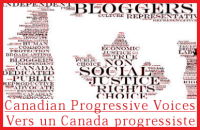The Caracazo of February-March 1989 was just the tip of an iceberg. A peaceful protest against a government betrayal, just the latest since “democracy” came to Venezuela in 1958, met with violent crackdown. As the social order disintegrated, looters stormed shops, carrying off whatever they could. And no wonder: The sudden devaluation of the Venezuelan bolivar, the disastrous neoliberal “package” pushed by then-president Carlos Andrés Pérez, and the resultant unaffordability of basic goods (which shopkeepers hoarded in backrooms so they could jack up the price on grounds of false scarcity), made robbery a necessity. Officially, the death toll was in the hundreds; in fact, it is in the thousands. And Venezuela has not had a full reckoning of that massacre, or the many others that preceded it, until now.
What does a country really look like during 40 years of weak, foreign-managed “democracy” which is a front for fascism and state terrorism? Ask Venezuelans; they know. And one Venezuelan in particular has this to say about it:
Events which occurred during the Caracazo, as the popular rebellion of February 27, 1989 became known, constituted the largest massacre during the Punto Fijo period (1958-1998), according to Aldemaro Barrios, member of the Commission for Justice and Truth which investigated cases of state-sponsored terrorism during that period.
“The Caracazo came to be the largest massacre in terms of the number of persons killed or disappeared during the Punto Fijo period, and also constitutes the largest genocide in Latin America, because it was determined that there were around 300 persons killed, but thousands of disappearances,” said Barrios of the results of the Caracazo, which some human rights organizations say totalled more than 3,000 dead.
Barrios observed that between 1958 and 1998, one constant was the criminalization of popular struggles, which translated into repression and state-sponsored terrorism resulting in massacres, such as those of the Caracazo, El Amparo, and Yumare.
All these events were investigated by the Commission following its installation in 2013, with the objective of revealing the truth about crimes of state committed by Punto Fijo-era governments.
After four years of investigation the Commission issued its final report with the register of 10,071 victims of murder, torture and disappearance for political reasons between 1958 and 1998.
Barrios stated that each case had repercussions for at least three members of the victims’ family groups, for which reason the total could reach some 30,000 persons affected directly or indirectly.
Translation mine.
So we can see that the Punto Fijo era of managed “democracy” was anything but democratic. Two ossified authoritarian parties, one “liberal” and the other “conservative”, swapping power; Washington behind both; no chance for genuine democracy, let alone the social reforms needed to make Venezuela sovereign and ensure that everyone’s needs were met. Is it any wonder that the Caracazo erupted? And is it any wonder that this happened, a few years later?
Real democracy in Venezuela was conceived in the failed military uprising of 1992…and the Bolivarian Revolution that followed, seven years later, with the election of Hugo Chávez Frías, who led the uprising and, even in prison, kept the faith until both he and his country were finally free. Even now, Venezuela’s freedom is being pooh-poohed in the northern hemisphere because it wasn’t granted by gringos, but taken by locals. And as the shadow of fascism falls across the US of Amnesia, it’s important to look at what Venezuela was, and what it became, what it is today, and what it has no desire to go back to again…because Gringolandia is now where Venezuela was in the 40 years before it finally had real democracy.



